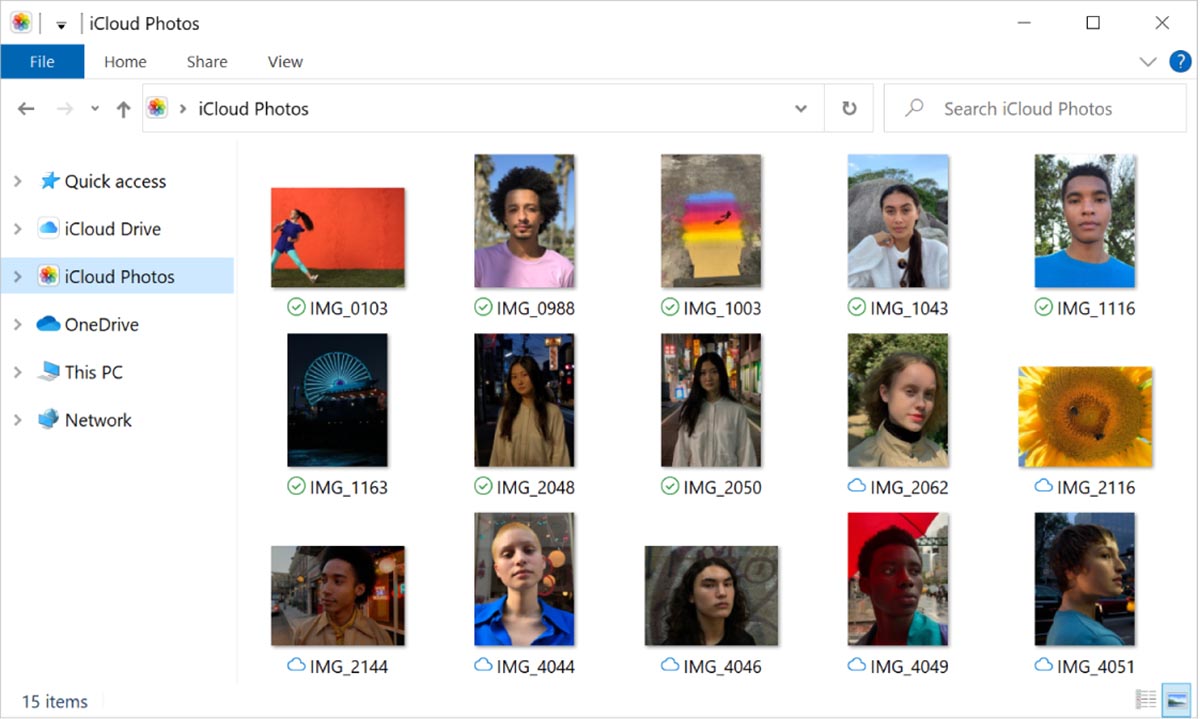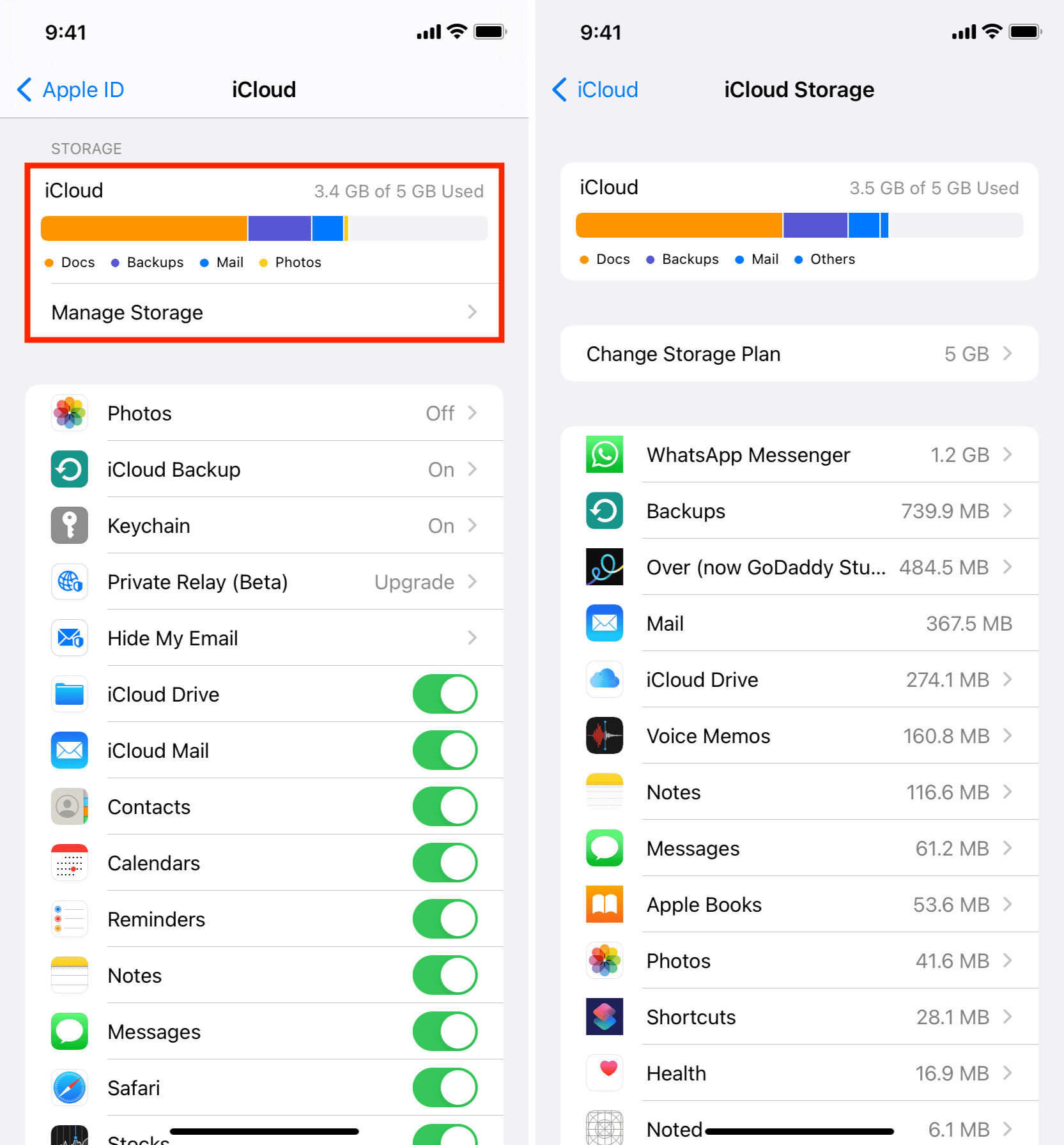

Articles
How To Store Your Photos
Modified: January 7, 2024
Learn the best storage options for your photos with our informative articles. Keep your memories safe and organized with our expert tips.
(Many of the links in this article redirect to a specific reviewed product. Your purchase of these products through affiliate links helps to generate commission for Storables.com, at no extra cost. Learn more)
Introduction
Photos are not just images captured in a moment; they are memories, emotions, and stories frozen in time. Whether it’s a picture of a loved one, a breathtaking landscape, or a spontaneous moment of joy, our photos hold immense value to us. That’s why it’s crucial to store and protect them properly to ensure that they can be cherished and shared for years to come.
Choosing the right storage method for your photos is essential to maintain their quality and accessibility. With the advent of digital photography, we have more options than ever before. From cloud storage to physical backups, there are various approaches you can take to ensure the safety and longevity of your precious memories.
In this article, we will explore the different storage methods available and provide you with tips on organizing and preserving your photos. Whether you’re a professional photographer or an amateur enthusiast, these strategies will help you safeguard your images and relive those special moments.
Without further ado, let’s dive into the fascinating world of photo storage!
Key Takeaways:
- Choose the right storage method for your photos based on your needs and preferences, whether it’s digital, physical, or a combination of both, to ensure their accessibility and longevity.
- Organize and back up your photos effectively by creating a structured folder system, using descriptive file names, and implementing backup strategies to protect your cherished memories for the long term.
Read more: How To Store Photos For Free
Choosing the Right Storage Method
When it comes to storing your photos, it’s crucial to consider factors like accessibility, security, and longevity. Here are some key points to keep in mind when choosing the right storage method:
- Digital vs. Physical: Decide whether you prefer digital or physical storage. Digital storage offers convenience and easy access, while physical storage provides a tangible backup that can withstand technological failures.
- Cloud Storage: Cloud storage has become increasingly popular due to its accessibility and reliability. Services like Google Drive, Dropbox, and iCloud offer secure storage with the ability to access your photos from any device with an internet connection. Ensure that the chosen cloud storage solution offers sufficient storage space for your needs.
- External Hard Drives: External hard drives are an excellent physical backup option. They provide large storage capacities and are portable, allowing you to keep your photos safe and accessible even offline. It’s recommended to choose a reputable brand and regularly back up your data to multiple drives for redundancy.
- NAS (Network Attached Storage): NAS devices are a great option for individuals or small businesses seeking centralized storage. These devices connect to your home or office network and offer large storage capacities with the ability to access files from multiple devices simultaneously.
- Printed Photo Albums: If you have a sentimental attachment to physical prints, consider creating high-quality photo albums. These albums not only preserve your photos but also provide a tangible and aesthetically pleasing way to browse through your memories.
Remember to assess your storage needs and budget when deciding the right method for you. It may even be beneficial to combine different storage options to create a comprehensive backup strategy.
Now that we’ve looked at the different storage methods available, let’s move on to organizing your photos effectively.
Organizing Your Photos
With the abundance of digital photos we capture today, it’s easy for them to become a disorganized mess. Taking the time to organize your photos will save you countless hours of searching and frustration in the future. Here are some tips to help you keep your photo collection in order:
- Create a Folder Structure: Start by creating a well-structured folder system on your computer or external hard drive. Organize your photos by date, event, location, or any other system that makes sense to you. This will make it easier to locate specific photos when you need them.
- Use Descriptive File Names: Rename your photo files with descriptive names that include relevant information. This could be the event name, location, or people in the photo. Avoid using generic names like “IMG_001” that provide no context.
- Add Metadata: Take advantage of metadata, which is additional information embedded in your photo files. This can include details like date, location, camera settings, and keywords. Adding metadata will make it easier to search and filter your photos in the future.
- Tag and Categorize: If your photo management software supports it, consider tagging your photos with keywords and categorizing them into albums or collections based on specific themes or subjects. This will allow for easier browsing and retrieval of photos based on specific criteria.
- Delete Unnecessary Photos: Periodically go through your photos and delete duplicates, blurry images, and shots that didn’t turn out as you had hoped. This will free up storage space and make it easier to navigate through your collection.
- Backup Your Organization: Ensure that you regularly backup your organized photo collection to a separate storage location. This will protect your organization efforts in case of data loss or hardware failure.
By implementing these organization strategies, you’ll save time searching for specific photos and be able to enjoy your collection more efficiently. Now let’s explore strategies for implementing backup plans to further protect your cherished memories.
Backup Strategies
Backing up your photos is crucial to protect them from unexpected events like hardware failure, theft, or natural disasters. Implementing a backup strategy will ensure that your precious memories are safe and secure. Here are some backup strategies to consider:
- Multiple Copies: It’s important to have multiple copies of your photo collection. This reduces the risk of losing everything in case of a single point of failure. Consider having at least three copies – original files, an on-site backup, and an off-site backup.
- Automated Backup: Set up automated backup processes to streamline the process and ensure that your photos are regularly backed up without requiring manual intervention. This can be done using backup software or cloud storage services that offer automatic syncing.
- Incremental Backups: Instead of backing up your entire photo collection every time, use incremental backups. These types of backups only save changes that have been made since the last backup, reducing the time and storage required.
- RAID Arrays: For those with a large photo collection, consider using RAID arrays for redundancy. RAID (Redundant Array of Independent Disks) combines multiple hard drives into a single logical unit, providing both increased storage capacity and data protection.
- Versioning: Look for backup solutions that offer versioning capabilities. Versioning allows you to restore older versions of your photos in case you accidentally delete or overwrite a file.
- Off-Site Storage: Storing backups in a different physical location is crucial to protect against theft, fire, or natural disasters. Consider using cloud storage, external hard drives kept at a different location, or a combination of both for off-site backups.
Remember to test your backups periodically to ensure they are functioning correctly and that the data can be successfully restored. Additionally, stay up to date with the latest backup technologies and practices to safeguard your photos effectively.
Now let’s discuss some popular options for cloud storage, which provide additional benefits and convenience for storing your photo collection.
Cloud Storage Options
Cloud storage has become increasingly popular for photo storage due to its convenience, accessibility, and scalability. Here are some popular cloud storage options to consider for storing your photos:
- Google Drive: Google Drive offers a generous amount of free storage space, along with affordable paid plans for increased storage capacity. It integrates seamlessly with other Google services and provides easy sharing and collaboration features.
- Dropbox: Dropbox is known for its user-friendly interface and robust file synchronization capabilities. It offers various storage plans and features like file versioning and sharing options.
- Microsoft OneDrive: OneDrive, developed by Microsoft, is tightly integrated with Windows. It offers competitive pricing plans and features like automatic camera roll backup from mobile devices.
- iCloud: iCloud is Apple’s cloud storage solution, designed to work seamlessly with Apple devices. It provides automatic backup of photos, documents, and other data across all connected devices.
- Amazon Drive: Amazon Drive offers secure cloud storage with flexible storage plans. It provides easy integration with other Amazon services and options for automatic syncing and backup of photos.
When choosing a cloud storage provider, consider factors like storage space, pricing, ease of use, compatibility with your devices, and additional features that may be relevant to your specific needs. It’s also important to read user reviews and evaluate the reputation and reliability of the provider before committing to a particular service.
Now that we’ve explored cloud storage options, let’s dive into physical storage options for those who prefer a tangible backup solution.
When storing your photos, use acid-free and archival-quality materials to prevent deterioration over time. This includes photo albums, storage boxes, and sleeves.
Read more: How To Store Photo Backdrops
Physical Storage Options
For those who prefer a tangible backup solution or want an additional layer of protection for their photos, physical storage options provide a reliable alternative. Here are some physical storage options to consider:
- External Hard Drives: External hard drives are portable, easy to use, and offer large storage capacities. They provide a convenient way to back up your photos and can be easily disconnected and stored in a separate location for added protection.
- NAS (Network Attached Storage): NAS devices are a popular choice for individuals or small businesses seeking centralized storage. They connect to your home or office network and offer large storage capacities with the ability to access files from multiple devices simultaneously.
- SSDs (Solid State Drives): SSDs are a newer technology that offer faster read and write speeds compared to traditional hard drives. While they may be pricier, they provide durability and can be a reliable option for storing and accessing your photo collection.
- CDs/DVDs: Although less popular today, CDs and DVDs can still be used for photo storage. They are affordable and offer a long shelf life if properly stored. However, they have limited storage capacity and may become obsolete in the future.
- Printed Photos: If you want a physical copy of your photos, printing them is an excellent option. High-quality prints can be placed in photo albums or frames, allowing you to enjoy and showcase your memories in a tangible form.
When using physical storage options, it’s important to ensure proper care and maintenance. Store your devices or physical media in a cool, dry place away from direct sunlight or extreme temperatures. Regularly check the integrity of your physical media and create additional backups when necessary.
Now that we’ve covered both cloud and physical storage options, let’s move on to some tips for long-term storage to ensure the longevity of your photo collection.
Tips for Long-Term Storage
Long-term storage of your photos requires careful consideration and proper maintenance to ensure that your memories remain intact for years to come. Here are some tips to help you with long-term storage:
- Backup Regularly: Make backing up your photos a regular habit. Whether it’s through cloud storage or physical backups, create a schedule and stick to it to ensure that your collection is consistently protected.
- Quality Storage Media: Invest in reliable and high-quality storage media. Choose reputable brands and opt for storage devices that are known for their durability. This will minimize the risk of data loss or corruption.
- Avoid Extreme Conditions: Keep your physical storage media away from extreme temperatures, humidity, direct sunlight, and magnetic fields. These factors can degrade the quality of the storage media and potentially damage your photos.
- Migrate Data if Necessary: Technology evolves, and storage formats can become obsolete. If you notice that your storage media or file formats are becoming outdated, ensure that you migrate your data to newer and more compatible options to prevent the loss of your photos.
- Label and Document: Clearly label your physical storage media with relevant information like dates, events, or file types. Additionally, maintain proper documentation of your digital storage methods, including login credentials and backup processes.
- Periodically Access and Review: Make it a habit to periodically access and review your stored photos. This will not only help you ensure that your backups are working correctly but also allow you to reminisce and enjoy your memories.
- Digitize Printed Photos: If you have a collection of printed photos, consider digitizing them to ensure their long-term preservation. Digitizing allows you to have a digital backup and protects against physical damage or loss.
- Stay Informed: Keep yourself updated on the latest advancements in storage technology and best practices for long-term photo storage. Staying informed will help you make informed decisions and adapt your storage strategies accordingly.
By following these tips, you’ll be well-prepared to store your photos for the long term and to preserve your cherished memories for future generations.
Now, let’s briefly discuss preserving printed photos, which hold a different level of sentimental value.
Preserving Printed Photos
Printed photos hold a unique sentimental value, and preserving them properly ensures that their colors, details, and memories are protected for future generations. Here are some tips for preserving your printed photos:
- Handle with Care: When handling printed photos, make sure your hands are clean and dry to avoid transferring oils or moisture onto the prints. Hold them by the edges or use clean cotton gloves to minimize physical contact.
- Keep Them in Archival-Quality Albums or Sleeves: Store your photos in acid-free and lignin-free albums or sleeves to prevent chemical reactions that can cause fading and deterioration over time. These materials are designed to be safe for long-term preservation.
- Avoid Sunlight and Extreme Temperatures: Display your printed photos in areas away from direct sunlight or extreme temperature fluctuations. Prolonged exposure to sunlight can cause fading, while extreme temperatures can warp or damage the prints.
- Use Acid-Free Mounting Materials: If you plan to mount your photos, use acid-free and lignin-free adhesive materials specifically designed for archival purposes. Acidic glues or tapes can deteriorate the prints and leave permanent marks.
- Store in a Cool, Dry Environment: When storing printed photos that are not on display, keep them in a cool, dry place with stable humidity levels. Avoid basements, attics, or areas prone to moisture, as the humidity can lead to mold, warping, or discoloration.
- Digitize for Backup and Sharing: Consider digitizing your printed photos to create a digital backup. This not only allows you to preserve the images but also makes it easier to share them with friends and family. Use a high-resolution scanner or consider professional scanning services for the best results.
- Label and Document: Ensure that you label the back of your printed photos with relevant information, including dates, names, and locations. Additionally, keep a record or catalog of your printed photo collection to document the stories and memories associated with each image.
- Handle Restoration and Preservation with Professionals: If you have old or damaged printed photos that require restoration or preservation, it’s best to consult with professionals. They have the expertise and tools to safely repair and preserve your cherished prints.
By following these tips, you can ensure that your printed photos remain in excellent condition for generations to come, allowing your loved ones to experience and appreciate the memories captured in each image.
Now, let’s conclude our article with a recap of the essential points we have discussed.
Conclusion
Storing and protecting your photos is vital to preserving the memories and emotions they hold. Whether they are digital or printed, organizing and backing up your photos will safeguard them from loss or damage and ensure their longevity.
We explored various storage methods, including cloud storage and physical options like external hard drives and NAS devices. Each method has its advantages, so choose the one that suits your needs and preferences.
Organizing your photos is equally important to make them easily accessible. Creating a structured folder system, using descriptive file names, and adding metadata will help you locate specific photos with ease.
Implementing backup strategies is crucial to protect your photos against hardware failures, theft, or other unforeseen events. Consider having multiple copies of your photo collection and automating the backup process whenever possible.
Cloud storage options provide convenience and accessibility, while physical storage options offer tangible backups and added security. Combining both methods may create a comprehensive backup strategy.
To ensure the long-term preservation of your photos, handle physical prints with care, use archival-quality materials, and store them in a cool, dry environment. Also, consider digitizing your printed photos for additional backup and easy sharing.
By following these tips and staying informed about the latest technologies and best practices, you can store and preserve your photos effectively, ensuring that your cherished memories last a lifetime.
So go ahead, take the necessary steps to store and protect your photos, and relish in the joy of sharing and revisiting those special moments for years to come.
Frequently Asked Questions about How To Store Your Photos
Was this page helpful?
At Storables.com, we guarantee accurate and reliable information. Our content, validated by Expert Board Contributors, is crafted following stringent Editorial Policies. We're committed to providing you with well-researched, expert-backed insights for all your informational needs.















0 thoughts on “How To Store Your Photos”